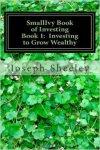Let’s say that you have a large sum to invest, like $100,000 or more. Maybe you received the bonus of you life at work, or maybe you just got an inheritance check and want to make it last. Invested right, that $100,000 can grow quickly and then provide extra income in retirement or before.
One of the best ways to think about investing is encapsulated by The Parable of the Pipeline, created by Burke Hedges. When you add investments, you are creating a source of income for which you don’t need to work, much as you can create a source of water that requires no effort on your part if you take the time to build a water pipeline. With $100,000, you can create an income of about $3,000-$4000 per year without the money ever running out. If you let it grow for another 20 years, that income stream can grow to $24,000-$32,000 per year. You’ve got to love compounding.
When looking at investing you money, you need to consider two factors – the time you have until you need to start getting an income from the money and the strength of your stomach for changes in the value of your investments. Let’s look at the four options:
1) You need income within five years and you can’t stomach a big drop in value. If you need the income soon and you just can’t take a lot of ups and downs in the market, you need a conservative strategy, which means diversification (investing in a lot of different things), income, and cash. In this case I would use index mutual funds to provide diversification and income and bank CDs to provide a cash reserve. Note that you can’t leave too much of the money in cash or inflation will consume a lot of it. A portfolio might look something like this:
$20,000 S&P 500 Fund
$20,000 International Fund
$20,000 REIT Fund
$30,000 Bond Fund
$10,000 in bank CDs
The S&P 500 fund would provide some growth of your money, but be invested in large stocks that aren’t going to decline as quickly as small stocks. The international fund provides some protection against a recession in the US (or just in case other countries’ markets are growing fast while the US is stagnant for a period). The REIT fund and the Bond fund both provide income and will provide a hedge against drops in the stock market, unless that drop is due to a rise in interest rates. On a really bad year, this account might drop by about 20% due to the equities, but there is plenty of cash available to spend while waiting for the recovery.
2) You don’t need income soon but you can’t stomach a big drop in value. Because we don’t need income we’ll use fewer fixed income securities. We won’t keep any cash since the cash will be eaten away by inflation. Such a portfolio might look something like this:
$30,000 S&P 500 Fund
$30,000 International Fund
$15,000 REIT Fund
$25,000 Bond Fund
Here we’ve increased the amount of equities (stocks) because of the longer lime horizon. The bond fund and REIT fund are therefore slightly reduced, but the bank CDs have been eliminated. On a really bad year you might see a 30% drop in value, but because cash isn’t needed right away, you could wait for the recovery.
3) You need income within five years but you don’t mind a wild ride if it means a better return. Here we’ll add in some small cap stocks and some individual stocks for the money you don’t need right away. We’ll keep cash for the money that will be needed and a small amount of bonds and REITs for a little bit of downside protection.
$15,000 S&P 500 Fund
$20,000 International Fund
$15,000 Small Cap Fund
$10,000 REIT Fund
$5,000 Bond Fund
$15,000 in Bank CDs
$20,000 Individual Stocks
3) You won’t need the money for a while and want to maximize your potential return. In this last scenario, we have a long time before the money is needed and are willing to have more volatility if it means a better return. We therefore forego the bonds and the REITs. We keep a base of large cap and international stocks, but then put a large share into small cap stocks and individual stocks since they will offer a better return if given a long time to grow.
$20,000 S&P 500 Fund
$20,000 International Fund
$30,000 Small Cap Fund
$30,000 Individual Stocks
Contact me at [email protected] or leave a comment.

The SmallIvy Book of Investing, Book 1: Investing to Grow Wealthy
Disclaimer: This blog is not meant to give financial planning advice, it gives information on a specific investment strategy and picking stocks. It is not a solicitation to buy or sell stocks or any security. Financial planning advice should be sought from a certified financial planner, which the author is not. All investments involve risk and the reader as urged to consider risks carefully and seek the advice of experts if needed before investing.
